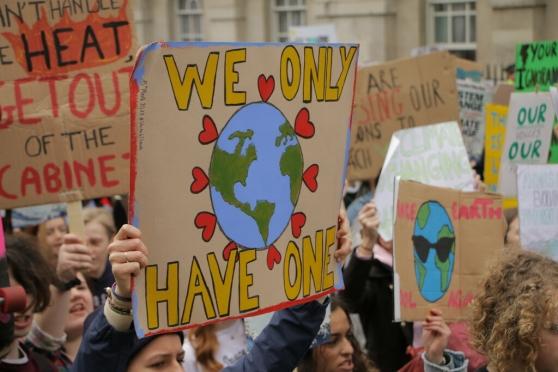Climate education teaching resources

Integrating climate education into the curriculum can arm our students with knowledge to help them meet one of the biggest challenges of their lifetime.
The NYC Department of Education established four Climate Action Days each focusing on a different theme: waste; energy; health, wellness and green space; and water.
Remember that climate change can be an anxiety-producing topic, especially for students who live, or who have family members who live, in vulnerable areas. Don’t share resources without context and hope. Use examples of how climate change could be slowed if humans enact change. Show how climate emergencies create opportunities for communities to make a difference. Allow students to brainstorm solutions and channel their ideas into action plans.
Curriculum materials
If you are planning to create lesson plans related to Climate Action Days or want to integrate climate change more regularly in your classroom, there are many high-quality materials online.
- DOE Office of Energy & Sustainability's Hub: grade-level Climate Action Day themed lessons
- Climate & Resilience Education Task Force Educator Toolkit designed for New York City teachers
- NYC Department of Environmental Protection's Climate Change Module for city educators
- NASA's Guide to Climate Change for Kids: age-appropriate activities for younger students
- National Oceanic & Atmospheric Administration (NOAA)'s Teaching Climate: curated K–12 curriculum materials
- American Museum of Natural History's Ology pages: interactive games and lessons
- Subject to Climate: cross-curricular K–12 resources
- U.S. Environmental Protection Agency: federally-created teaching materials
- United Nations' Act Now: shares practical ways to make a difference and track their impact
- Resilient Schools Consortium curriculum for middle and high school (survey required for access)
- Waterfront Alliance's Coastal Resilience Education Toolkit designed for city educators
- Open Education Resouces' Climate Project: online course, free with educator signup
Visual and media resources
Online simulations demonstrate how our world has and will transform. Some sites include historical data and imagery so we can see a timeline of change; others predict outcomes based on what human interventions may or may not occur.
- Google Earth: These tours depict rising sea levels, deforestation and air pollution in New York City and locations around the world.
- NASA's Climate Time Machine: This series of visualizations shows how some of Earth's key climate indicators are changing over time.
- Climate Impact Lab: This map contains historical data and predicts temperature rise, adjusting for the amount of emissions.
- MIT's Climate Primer: This tool combines statistics and interactive charts to provide an overview of climate change.
- Climate Central: Its coastal-risk screening tool shows areas that will be underwater by a certain year or temperature.
- En-ROADS Solutions: It demonstrates the impact of different variables on our climate, such as increased energy efficiency or continued reliance on coal and oil.
- The Carbon Map: The map adjusts our view of the globe according to which area of the world is most responsible for emissions or which people are most vulnerable to risk.
- Climate Trace: This site tracks greenhouse gas output via a map of the world to quickly illustrate who and what cause the most emissions.
- Climate Crisis Timeline: This site from the Zinn Education Project examines historical events from a climate justice lens.
- What's Going on in This Graph: Using graphs from the New York Times, this resource from the Times' Learning Network offers classroom strategies for addressing data related to climate change.
- Unnatural Disasters: These story maps from the Natural Wildlife Federation show how natural disasters intensified by climate change affect people and wildlife across the United States.